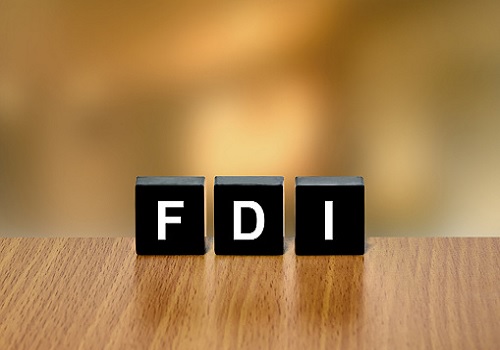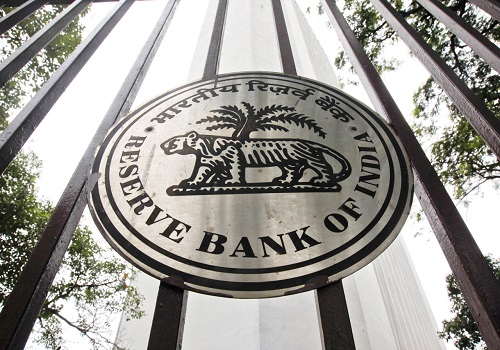India’s growth to remain highest among leading economies, FDI Inflow to touch US $ 100 billion in 2022-23 : PHD Chamber

Follow us Now on Telegram ! Get daily 10 - 12 important updates on Business, Finance and Investment. Join our Telegram Channel
Decriminalization of the minor offences will boost the size of the economy to US $ 5 trillion by 2026-27, says the industry body PHDCCI
India’s growth trajectory will remain highest among the leading economies in 2022-23 supported by various dynamic reforms undertaken by the government during the last two years, said Mr. Pradeep Multani, President, PHD Chamber of Commerce and Industry in a press statement issued here today.
India is expected to attract a US $ 100 billion FDI inflow in 2022-23 supported by various ground touching economic reforms and significant ease of doing business in the recent years, said Mr. Pradeep Multani
Though GDP growth is consolidating at around 9% in FY 2021-22 which is highest among the leading economies; the current financial year 2022-23 is expected to attain a GDP growth of more than 8% in 2022-23 which is again highest among the top ten economies, said Mr. Multani.
Geo–political conflicts, high inflation and renewed corona variants are the major worrying factors in 2022-23, said Mr. Pradeep Multani.
At this juncture, the percolation of Ease of Doing Business at the factory level would go a long way to enhance the size of the economy to US$ 5 trillion by 2026-27, said Mr. Pradeep Multani.
The analysis undertaken by the industry body PHDCCI, Economy to resume Normal Growth Curve in 2022-23 (report attached), envisages that the nominal GDP will grow at 12-12.5% (8% real GDP and 4-4.5% inflation) in the current financial year and economy will attain a size of USD 3350-3400 billion in 2022-23. The size of the economy is expected to touch USD 5 trillion by 2026-27, said the analysis conducted by industry body.
The nominal GDP is expected to grow at more than 12% (average) in the next 5 years, said the analysis conducted by Industry body PHDCCI.
The agriculture and food processing sector has emerged as one of the most prominent sectors to move forward and to achieve a size of US $ 5 trillion by 2026-27. The sector is growing promising both in production and exports, said Mr. Pradeep Multani.
However, the inflation scenario has been stoked by rising international commodities prices, particularly crude oil prices, said Mr. Pradeep Multani.
Though geo–political conflicts will undermine the world GDP growth by 0.5 percentage points, the Indian Economy is expected to remain resilient on the back of its inherent strengths, strong economic fundamentals and growth promising sectors, said Mr. Pradeep Multani.
The industry body has suggested a 10 prolonged strategy to strengthen the economic growth and to achieve US $ 5 trillion in the next 5 years by 2026-27.
1. Refueling of consumption demand will have a multiplier effect on production possibilities, private investments and employment creation.
2. Accommodative policy stance should be continued by RBI to strengthen the growth till it becomes more strong and sustainable.
3. Speedy Infrastructure Investments to give a multiplier effect. The robust growth of infrastructure is the key ingredient to realize the vision to become Atmanirbhar Bharat.
4. PLI scheme to become more robust -- More and more sectors should be covered under the PLI scheme. PLI scheme has to be instrumental in accelerating domestic manufacturing capabilities and strengthening economies of scale.
5. Level playing field for the Indian industry should be focused for the competitiveness of enterprises. Free Trade Agreements must be looked into the scenario of Market Access Opportunities in the destination economies.
6. Mitigating the impact of recent geo political developments -- As the recovery process has been coincided with the geo political developments; economy should be supported with continued reforms for the businesses particularly for the MSMEs and agriculture sector.
7. Increase public investments in agriculture sector -- The increase in public investments in agricultural infrastructure would attract private investments in cold storage, warehousing and supply chain of agriculture produce in order to reduce food wastages and get them to urban citizens at moderate rates.
8. Address the high commodity prices and shortages of raw materials -- to support the consumption and private investments in the country. Escalation in the international commodity prices should be addressed with reduction in the excise duties on the key raw materials and easing the supply chains. The petroleum products which stoke the inflation to higher level should be brought in the ambit of GST.
9. Reduce the costs of doing business -- Although, procedural requirements have been relatively reduced and the communication between Government departments has become transparent and hassle free, however, the cost aspect still needs to be relaxed further. There must be a focus on reducing the cost of doing business with ease of doing business becoming robust at the factory level.
10. Decriminalisation of minor offences -- The government should handhold the industry with a major focus on manufacturing to achieve a higher and sustainable economic growth trajectory to create new avenues for job creation and competitiveness of the enterprises at global level. The decriminalisation of the minor offences would go a long way to build confidence of the entrepreneurs and attract a large chunk of investments from domestic and international investors.
Above views are of the author and not of the website kindly read disclaimer










Tag News

Monthly Debt Market Update, September 2023: CareEdge Ratings





 320-x-100_uti_gold.jpg" alt="Advertisement">
320-x-100_uti_gold.jpg" alt="Advertisement">








